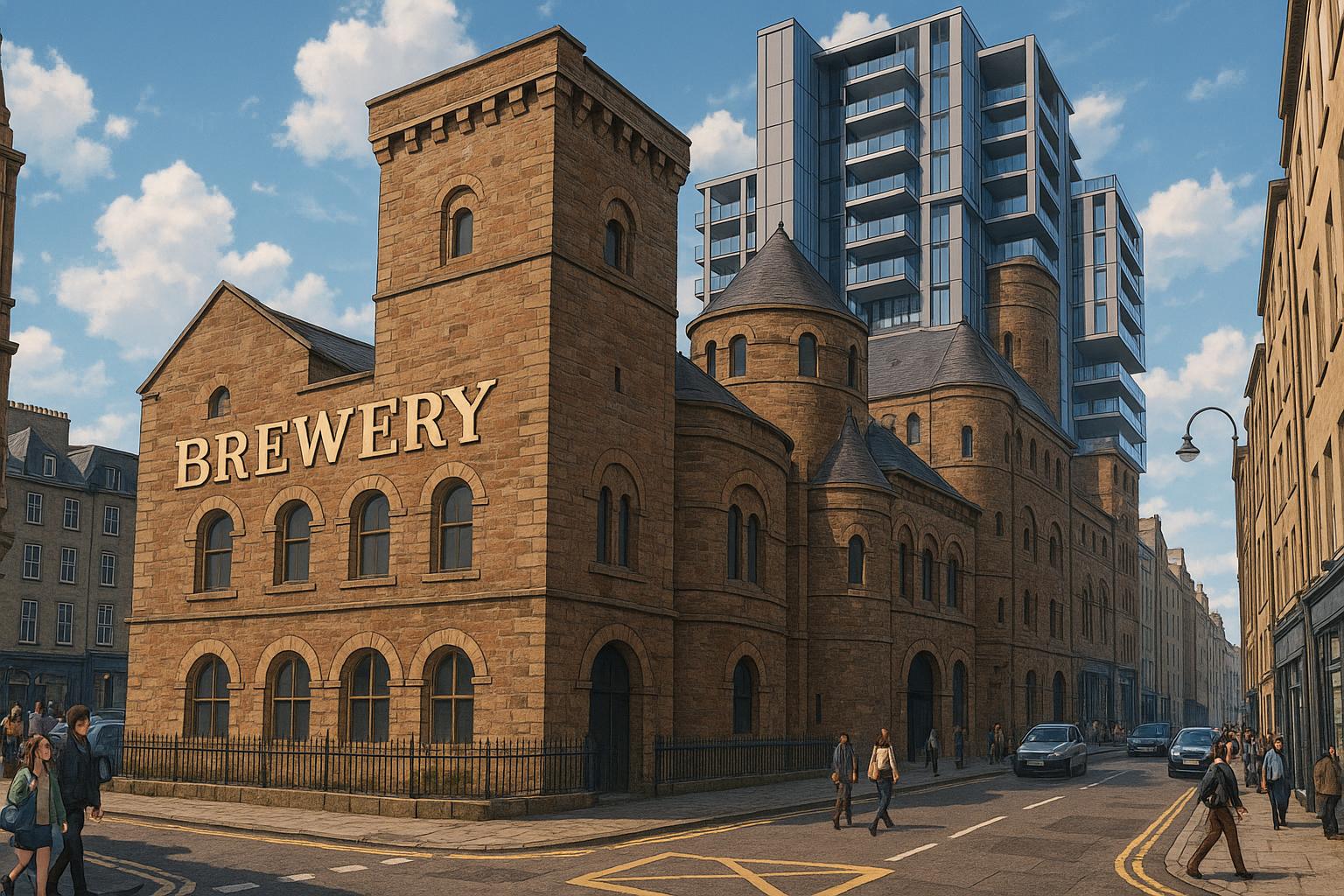The proposed partial demolition of the Caledonian Brewery in Edinburgh marks a significant juncture in the city's ongoing struggle to balance urban development with heritage conservation. Established in 1869, the brewery is a listed building located on Slateford Road, and the decision to dismantle parts of this historic site has sparked considerable local debate. The City of Edinburgh Council is set to discuss the proposal, which has garnered a mixed response from the community.
The ambitious plan, put forth by Artisan Real Estate, envisions the construction of 168 new homes, of which 40 are designated as affordable housing. However, the demolition of certain structures deemed "less valuable," while preserving key heritage buildings, raises questions about the long-term impact on both the local neighbourhood and the brewery's historical integrity. This proposal is not merely about buildings; it seeks to reshape community dynamics in a city facing significant housing pressures.
In recent years, Edinburgh's housing crisis has intensified, prompting officials to prioritise new housing developments. With a notable increase in demand for affordable living spaces, the council is under pressure to expedite approvals for such projects. Artisan claims that their plans are in line with city policies aimed at alleviating housing shortages, yet community feedback suggests a lack of consensus regarding the execution of these proposals.
Feedback on the development has been overwhelmingly critical, receiving 164 comments with only six in support. Concerns predominantly centre around parking provisions, with residents expressing worries that the addition of 168 homes without adequate parking solutions will exacerbate already strained local infrastructure. One resident articulated that the area has long suffered from parking difficulties, highlighting the perceived irresponsibility of increasing housing density in a region where residents already struggle to find spaces.
The planning documents state the provision of just two accessible parking spaces equipped with electric vehicle chargers, alongside a robust proposal for bicycle parking, aiming to accommodate 365 bikes across the site. Despite the environmentally conscious transport suggestions, locals remain sceptical, pointing out that inadequate parking will hinder the livability of the new homes.
Beyond transportation logistics, residents also voiced concerns about healthcare access, noting that local GP resources are already overstretched and may struggle to encompass new arrivals. This issue underscores the complexities of urban renewal, including the necessity to address health services alongside housing.
Artisan's Managing Director for Scotland, David Westwater, insists on the commitment to creating a "sustainable residential neighbourhood" that respects the existing historical context while delivering quality urban living. His assertion that the mix of housing should include mainstream options rather than solely catering to students and renters aligns with a broader trend in urban planning that seeks to enhance community heterogeneity.
Artisan's approach appears to focus heavily on collaboration with heritage experts, asserting that their design will preserve the historical essence of the Caledonian Brewery while fulfilling pressing housing needs. They’ve described their methodology as a model design approach for complex urban sites and aim for a development that will be an aesthetic and practical enhancement to the city.
Despite the optimistic vision presented by the developer, the path to approval remains fraught with contention. The local community's apprehensions highlight the inherent challenges of urban development in historical contexts—a balancing act between growth and preservation, housing and heritage. As the council prepares to deliberate on this proposal, the outcome will not only determine the future of the Caledonian Brewery site but could also set important precedents for urban development in Edinburgh and beyond.
Reference Map
- Lead article summary
- Local objections and community feedback on the proposal
- Artisan's perspective and planning challenges
- Broader context of Edinburgh's housing crisis and urban planning trends
Source: Noah Wire Services
